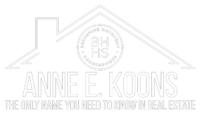It can be tempting to rent out your vacation home while you’re not using it- but if you took out a loan to buy your vacation home, it may come with renting restrictions. Different loans operate differently, and it’s important to understand the constraints that your loan carries before renting out your space.
Here are the main impacts that mortgages have on vacation homes:
The options
There are three main types of loans to consider: primary residence, second-home, and non-owner occupied. Primary residence loans have the lowest mortgage rates out there. The only requirement before renting is for you to live in the home for a full year.
Second-home loans have the same low rate as primary residence loans with a larger down payment, but you can’t rent the home out: only your family and friends can stay. Non-owner occupied loans allow renters, but they require a higher mortgage rate and a higher down payment.
Second-home loan constraints
As mentioned, the downside of this loan is the lack of ability to rent out the home. Be careful, because when you first look at the agreement with the renter, it may appear there are no restrictions on renters- but there are. This agreement is called the note.
The other place to look at is the addendum, which is known as a rider. The rider generally prohibits renters as well, detailing the ramifications of violating the agreement. Therefore, this type of loan takes renting your home as a way to help pay for your home out of the picture.
In Conclusion…
If you plan to afford a vacation home by renting it out, you’ll need to review non-owner-occupied loan options with your lender. This means you’ll have to put down a larger down payment, and your interest rate will be slightly higher. With that said, it’s a small price to pay for the flexibility of earning income from a home that you also use for your own enjoyment.
Source: Zillow

